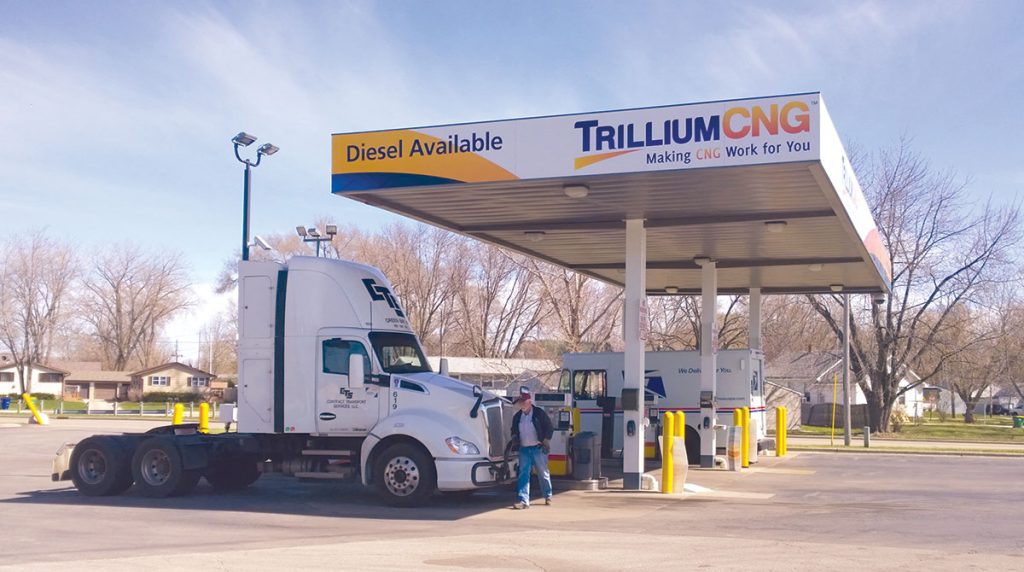Chicago Area Clean Cities hosted a webinar on April 8 to discuss the benefits of a transition to compressed natural gas. The panel featured a variety of local industry leaders from companies like Dillon Logistics and Trillium.
Fleets across the country are opting for compressed natural gas (CNG) to power their fleets as gas prices rise. With the United States dubbed “the Saudi Arabia of natural gas,” it is no surprise that compressed natural gas has become not only a feasible option for powering fleets, but a cost-effective and popular one. The U.S. follows Russia, Iran and Qatar in total cubic meters of natural gas reserves in the world.
“It’s an American fuel,” said Marc Rowe, senior manager of business development at Trillium, at the webinar on Thursday. “We have plenty of it to power our homes, factories and now trucks for decades to come.”
Depending on the vehicle type, CNG promises a reduction in carbon monoxide emissions by about 90% and a 35-60% nitrogen oxide (NOx) reduction.
Argonne National Laboratory’s GREET model shows that approximately one liter of compressed natural gas, throughout its entire lifecycle, will emit about 0.32 grams of carbon dioxide. Normal gasoline, however, will emit close to 400 grams of carbon dioxide when one liter is burned. Undoubtedly cleaner, compressed natural gas also provides an opportunity to halt the U.S. reliance on foreign oil, which causes a constant threat to the stability of gas prices.
Even compared to electric vehicles, CNG has proven to be just half as costly per pound of NOx emitted and for the cost of technology.
“No project gets off the ground without a payback,” Rowe said, “We are seeing CNG fuel costs at 30-50% less than a diesel vehicle. There are also still tax incentives, which could further that delta.”
As of 2021, Trillium operates more than 200 CNG stations, 65 of which can be accessed by the public. In fall of 2020, Naperville finished its construction of a CNG fueling station, the finish line for a project that had been started years earlier.
“The biggest lesson I learned is that time is of the essence, build it and they will come,” said Dick Dublinski, the director of public works for the City of Naperville. “CNG is a great solution for a clean city, and it checked off all our goals.”
Naperville serves as a case study for what future CNG stations and CNG-powered government fleets could look like as the fuel becomes more common.
“Alternative fuels can change our country, and we need to do that,” Dublinski said.
By Jenna Spray
Chicago Area Clean Cities



